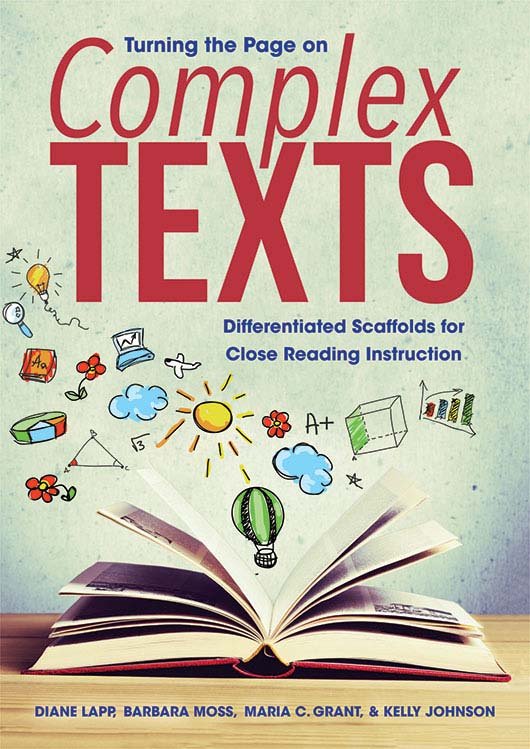Free Reproducibles
Turning the Page on Complex Texts
Differentiated Scaffolds for Close Reading Instruction
Ensure all learners become successful close readers. In this powerful resource, the authors examine how to select appropriate complex texts and design instruction to meet the needs of every student. Explore grade-specific classroom scenarios that illustrate how to scaffold lessons to foster close reading and deepen comprehension at all stages of K–12 education.
Benefits
- Gain practical teaching strategies for creating close reading lessons.
- Consider grade-level-specific instructional scenarios that illustrate how to support students as they learn to read closely.
- Learn how to evaluate a text's complexity and how to ask text-dependent questions that can help students engage with a text.
- Study evidence for why continuous close assessment of student performance is vital for making sure all students learn to closely read complex texts.
- Discover potential contingency scaffolds for the classroom and how to use them to promote student success in closely reading a text.
TABLE OF CONTENTS
Part I: Background and Planning Information
Chapter 1: Understanding Close Reading
Chapter 2: Identifying Text Complexity
Chapter 3: Making Decisions That Support Close Reading Instruction
Chapter 4: Assessing During Close Reading
Part II: Instructional Scenarios
Chapter 5: Understanding What the Text Says Through Differentiated Scaffolds
Chapter 6: Understanding How the Text Works Through Differentiated Scaffolds
Chapter 7: Understanding What the Text Means Through Differentiated Scaffolds
Chapter 8: Supporting Knowledge Demands With Differentiated Scaffolds
Appendix A: Instructional Scenario Chart
REPRODUCIBLES
- Appendix B: Online-Only Instructional Scenarios
- Figure 2.5: Reader and Task Checklist
- Figure 3.1: Text-Dependent Question Planning Chart
- Figure 4.1: Note-Taking Form for Whole-Group Close Reading
- Figure 4.2: Note-Taking Form for Next Steps for Small-Group Close Reading
- Figure 5.4: Graphic Organizer for Narrative Text
SUGGESTED RESOURCES
- Annenberg Learner
- Annenberg Learner, "Fostering Close Reading”
- Annenberg Learner, "Power Writing for Science”
- Civil Rights Act of 1964
- Lexile
- Susan B. Anthony's speech "Woman's Rights to the Suffrage”
- Teach the Books You Love
- Teaching Tolerance
- Vancouver Aquarium, "Sunflower Star Has Weird Way of Eating”

